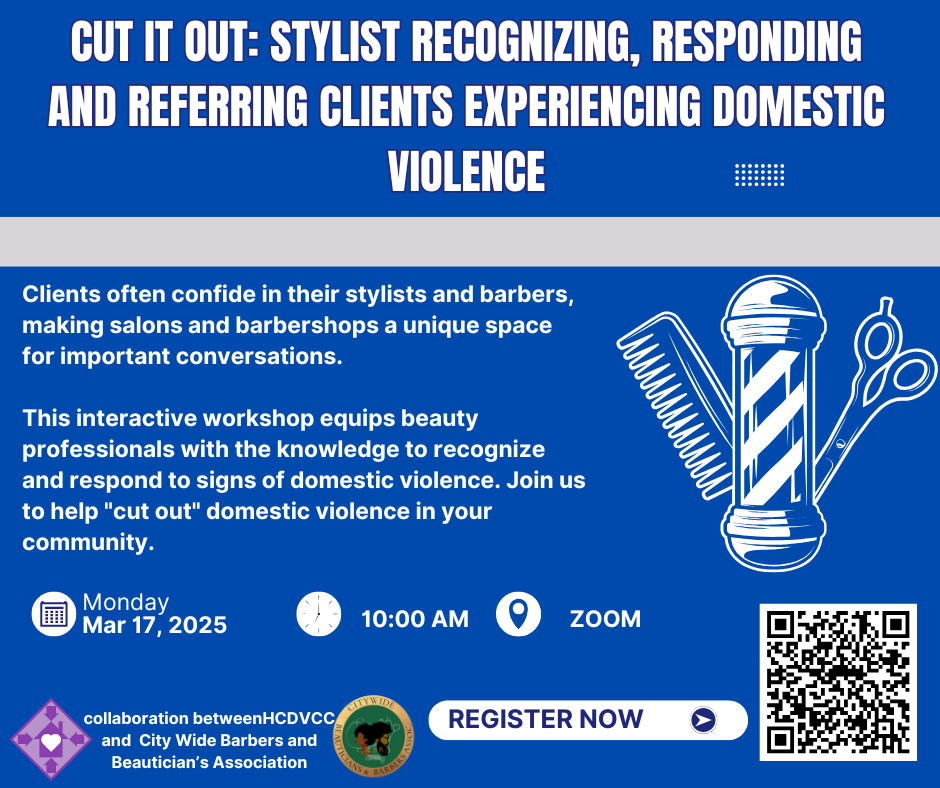March 17 @ 10:00 am – 12:00 pm CDT

Approximately one in three women and one in nine men will experience domestic violence during their lifetime. Only about thirty-three percent of all survivors of domestic violence will ever contact law enforcement or seek services from a crisis center, which means sixty-seven percent are not accessing help.
The relationship built between stylist (including barbers) is one of mutual trust. Often clients will share intimate details of their life and are open to “advice” from their stylist. Clients are often listening to latest relationship drama from other clients and information is flowing in the salon.
This two hour interactive workshop has been designed for the beauty professional, who is civic minded, and desires to “cut out” domestic violence through providing education and prevention in their salons and barbershops.
theciajenkins@hcdvcc.org










